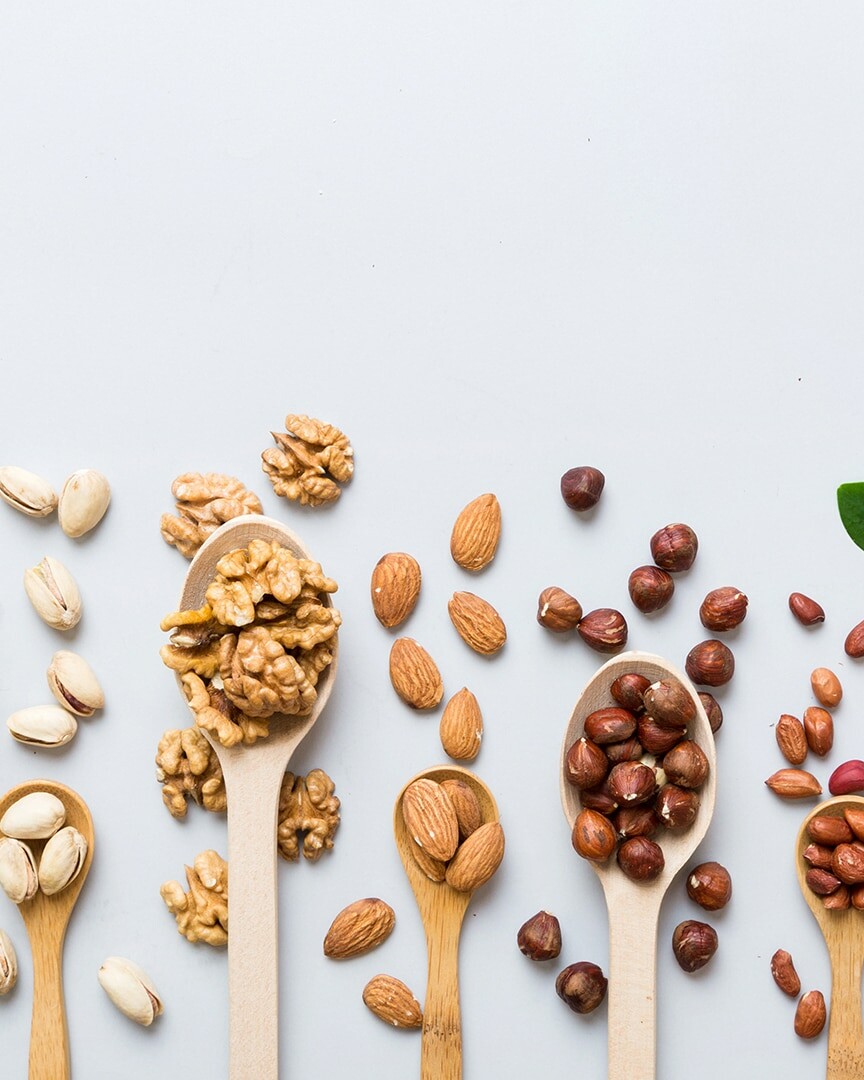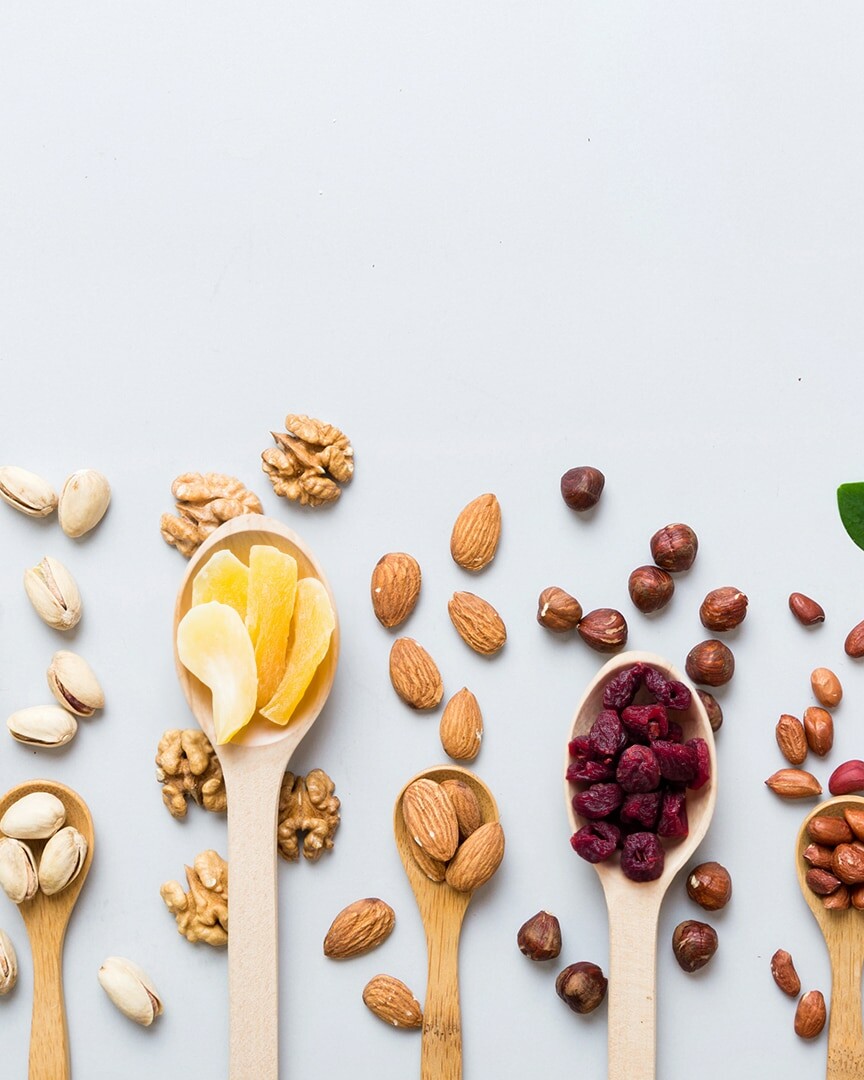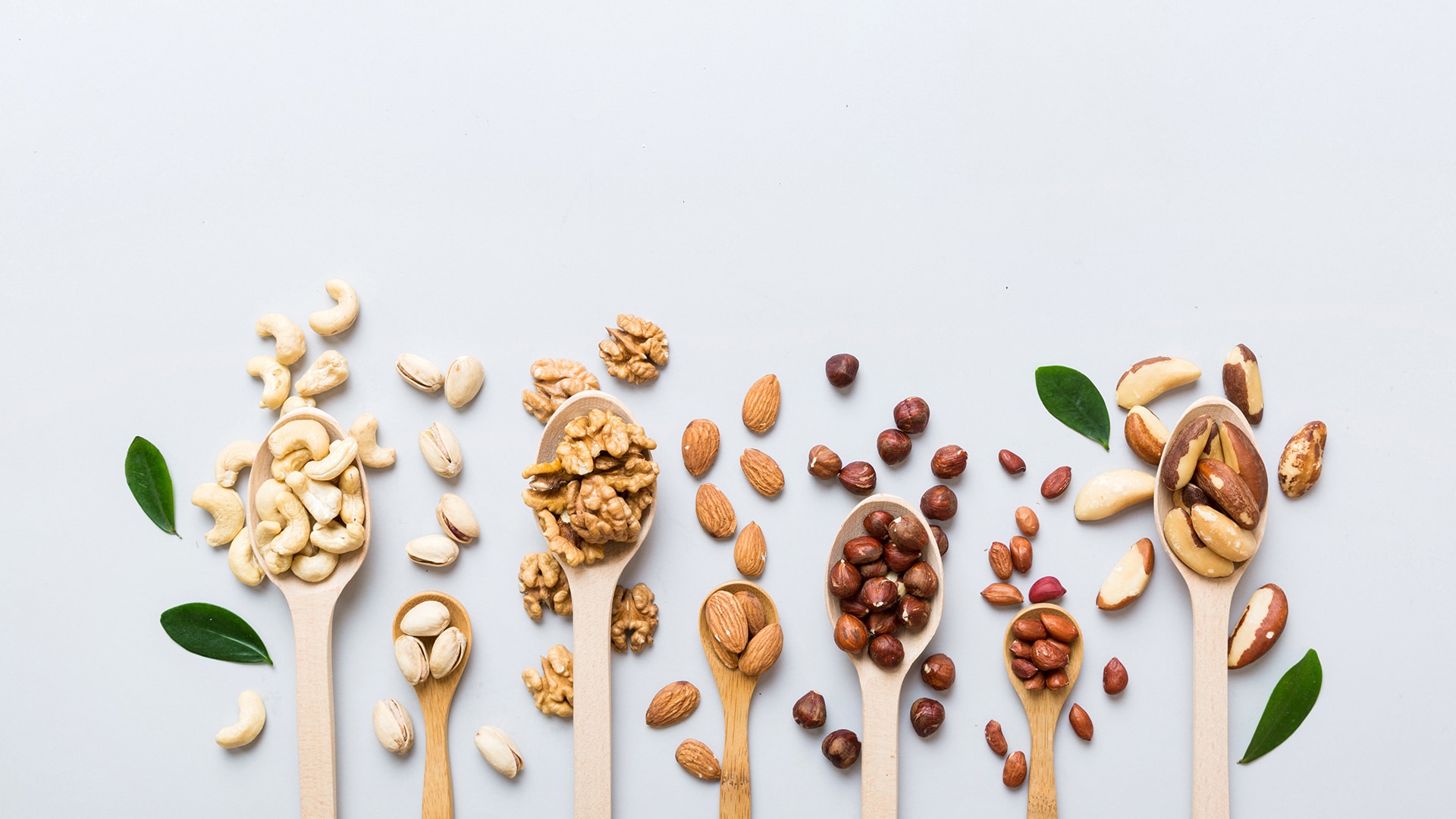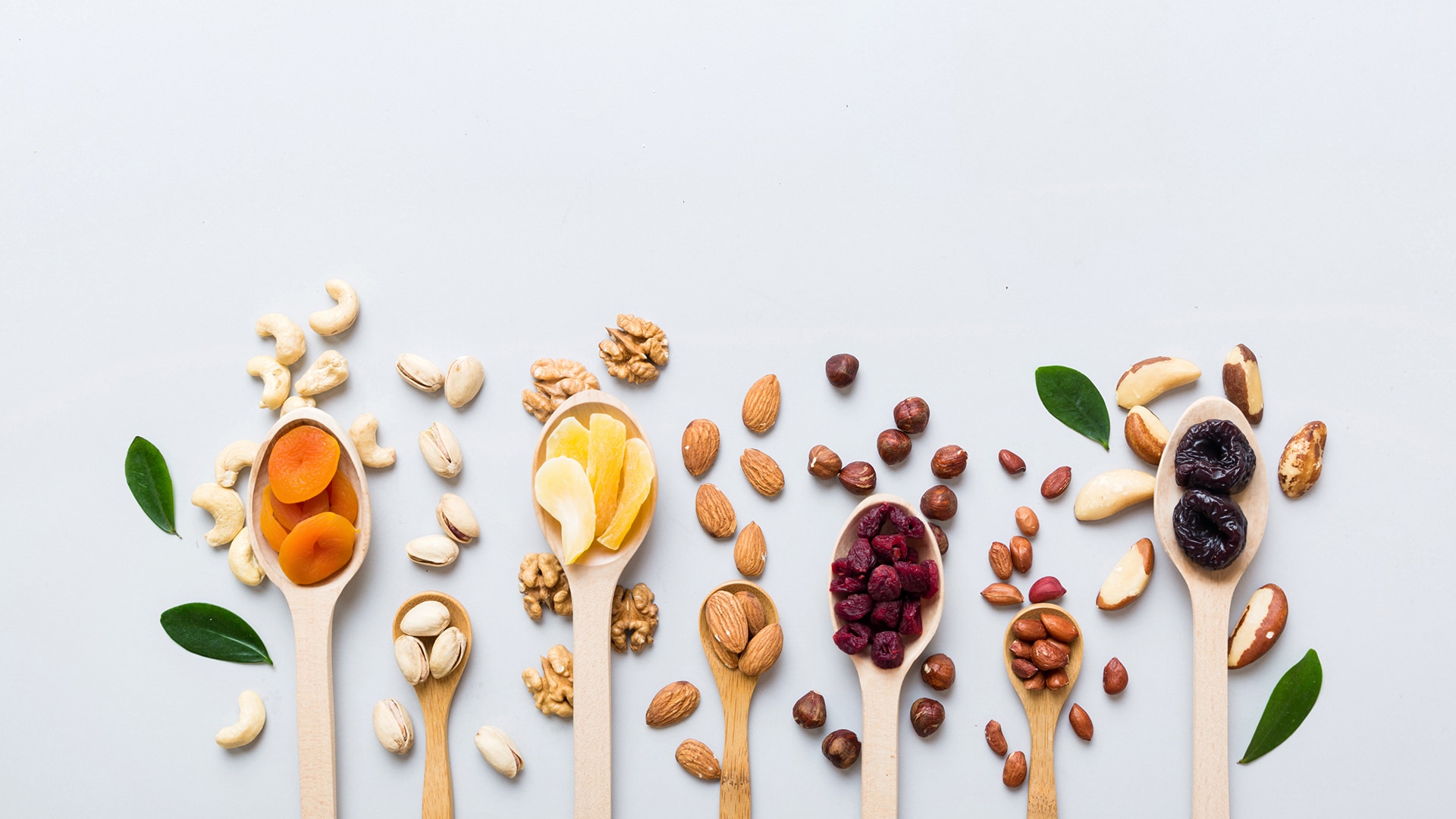Dried Fruits vs. Dehydrated Fruits:
see the Differences!
Dried fruits and dehydrated fruits are two types of health foods, but they have some significant differences in both the production process and nutritional characteristics. Here is an overview of what you should know about their main differences.
Dried Fruits
vs. Dehydrated Fruits:
see the Differences!:
Dried fruits and dehydrated fruits are two types of health foods, but they have some significant differences in both the production process and nutritional characteristics. Here is an overview of what you should know about their main differences.
Dried Fruit
Dried Fruits are those that naturally contain a low water content. These terms generally refer to nuts such as walnuts, almonds, hazelnuts, pistachios, etc. This category of foods also includes oilseeds such as pumpkin seeds, sesame seeds, sunflower seeds, and flax seeds, which have similar nutritional characteristics to nuts.
Dehydrated Fruit
Dehydrated Fruit the fresh fruit from which most of the water has been removed through a dehydration process. The main foods that are often taken after undergoing dehydration treatment are apples, bananas, grapes, plums, apricots, pineapples, and many other fruits but not only that, also potatoes, carrots, tomatoes, peppers, onions, garlic, and many other vegetables.
Dried Fruit
Dried Fruits are those that naturally contain a low water content. These terms generally refer to nuts such as walnuts, almonds, hazelnuts, pistachios, etc.
Dehydrated Fruit
It is the fresh fruit from which most of the water has been removed through a dehydration process. These are usually apples, bananas, grapes, plums, apricots, pineapples, and many other fruits as well as vegetables.
Production Process
Usually, dried fruits grow and ripen with a low water content. It is not subjected to a dehydration process.
Production Process
Fresh Fruit undergoes a dehydration process, through which most of the water is removed. This process can be accomplished in various ways, such as sun drying, hot air drying, or the use of a dehydrator.
Nutrients
Rich in healthy fats, vitamins B and E, protein (about 12-13% per 100 g of food), fiber, and micronutrients.
Nutrients
It retains most of the vitamins and minerals found in fresh fruit, but the concentration of sugars and calories will be higher because of the reduced water content.
Nutritional information may vary depending on the specific variety and method of preparation. It is always best to check product labels for accurate information.
Calories
It tends to be higher in calories because of its high fat content.
Calories
It has a higher caloric content than fresh fruit (on a weight basis) due to reduced water content.
Texture
It usually has a crunchy texture.
Texture
Soft and chewy or crunchy, depending on the dehydration process used.
Storage and Durability
It has a long shelf life, and can be stored for a long time without deteriorating, provided it is stored properly.
Storage and Durability
It too has a fairly long shelf life, especially if stored in airtight containers to prevent moisture absorption.
Recommended daily allowances of dried and dehydrated fruits may vary depending on several factors such as age, gender, physical activity level, and individual caloric needs.
Recommended daily doses
Here are some general guidelines
Dried fruits such as walnuts, almonds, hazelnuts, pistachios
A typical dose is about 28-30 grams, which is roughly equivalent to a fist or handful. This amount provides a good balance of nutrients without excessive calories.
Note Dried fruits are nutritionally and calorically dense, so it is best to consume them in moderation. It can provide a good amount of healthy fats, protein, fiber, vitamins and minerals.
Recommended daily doses
Here are some general guidelines
Dehydrated Fruit
A typical dose may vary, but is generally around 15 to 30 grams. This amount can provide a good dose of fiber, vitamins and minerals.
Note Because the water has been removed from dehydrated fruit, it is more concentrated in terms of sugars and calories than its fresh counterpart. Therefore, it is advisable to consume it in moderation to avoid excessive sugar and calorie intake.
General Considerations: Balance and Variety.
Dried fruit can be a valuable addition to a balanced diet, however, it is important to note that because of its high nutrient density, it is also a caloric food. Therefore, its consumption should be moderate and balanced with other foods throughout the day to ensure a varied and balanced nutritional intake. Varying the types of dried and dehydrated fruits you consume can help ensure a wide range of nutrients. Finally, as mentioned, it is important to pay attention to portions to avoid excessive caloric intake.
Remember, these are only general guidelines and it may be helpful to consult a health professional or nutritionist for personalized advice.
Production Process
Dried Fruit
Usually, dried fruits grow and ripen with a low water content. It is not subjected to a dehydration process.
Dehydrated Fruit
Fresh fruit undergoes a dehydration process, through which most of the water is removed. This process can be accomplished in various ways, such as sun drying, hot air drying, or the use of a dehydrator.
Nutrients
Dried Fruit
Rich in healthy fats, vitamins B and E, protein (about 12-13% per 100 g of food), fiber, and micronutrients.
Dehydrated Fruit
It retains most of the vitamins and minerals found in fresh fruit, but the concentration of sugars and calories will be higher because of the reduced water content.
Nutritional information may vary depending on the specific variety and method of preparation. It is always best to check product labels for accurate information.
Calories
Dried Fruit
It tends to be higher in calories because of its high fat content.
Dehydrated Fruit
It has a higher caloric content than fresh fruit (on a weight basis) due to reduced water content.
Texture
Dried Fruit
It usually has a crunchy texture.
Dehydrated Fruit
Soft and chewy or crunchy, depending on the dehydration process used.
Storage and Durability
Dried Fruit
It has a long shelf life, and can be stored for a long time without deteriorating, provided it is stored properly.
Dehydrated Fruit
It too has a fairly long shelf life, especially if stored in airtight containers to prevent moisture absorption.
Recommended daily allowances of dried and dehydrated fruits may vary depending on several factors such as age, gender, physical activity level, and individual caloric needs.
Recommended daily doses
Here are some general guidelines
Dried Fruit
Such as walnuts, almonds, hazelnuts, pistachios, walnuts, etc.
A typical dose is about 28-30 grams, which is roughly equivalent to a fist or handful. This amount provides a good balance of nutrients without excessive calories.
Note Dried fruits are nutritionally and calorie dense, so it is best to consume them in moderation. It can provide a good amount of healthy fats, protein, fiber, vitamins and minerals.
Dehydrated Fruit
A typical dose may vary, but is generally around 15 to 30 grams. This amount can provide a good dose of fiber, vitamins and minerals.
Note Because the water has been removed from dehydrated fruit, it is more concentrated in terms of sugars and calories than its fresh counterpart. Therefore, it is advisable to consume it in moderation to avoid excessive sugar and calorie intake.
Sofia
My name is Sofia, I am a Blogger, and I publish posts about dietary supplements, including their health benefits, recommended uses, potential interactions, and side effects. To report any inaccuracies, errors, or simple typos, you can write to me at redazione@encanto.it.
Related Contents
IN&OUT: an alliance between inside and outside
To translate this philosophy into practice, Encanto Nutraceuticals has developed Supplement formulations that fully embody the IN&OUT concept.
Proactive or Reactive Approach?
In health terms, the Proactive or Reactive approach refers to how an individual manages his or her health and well-being.





